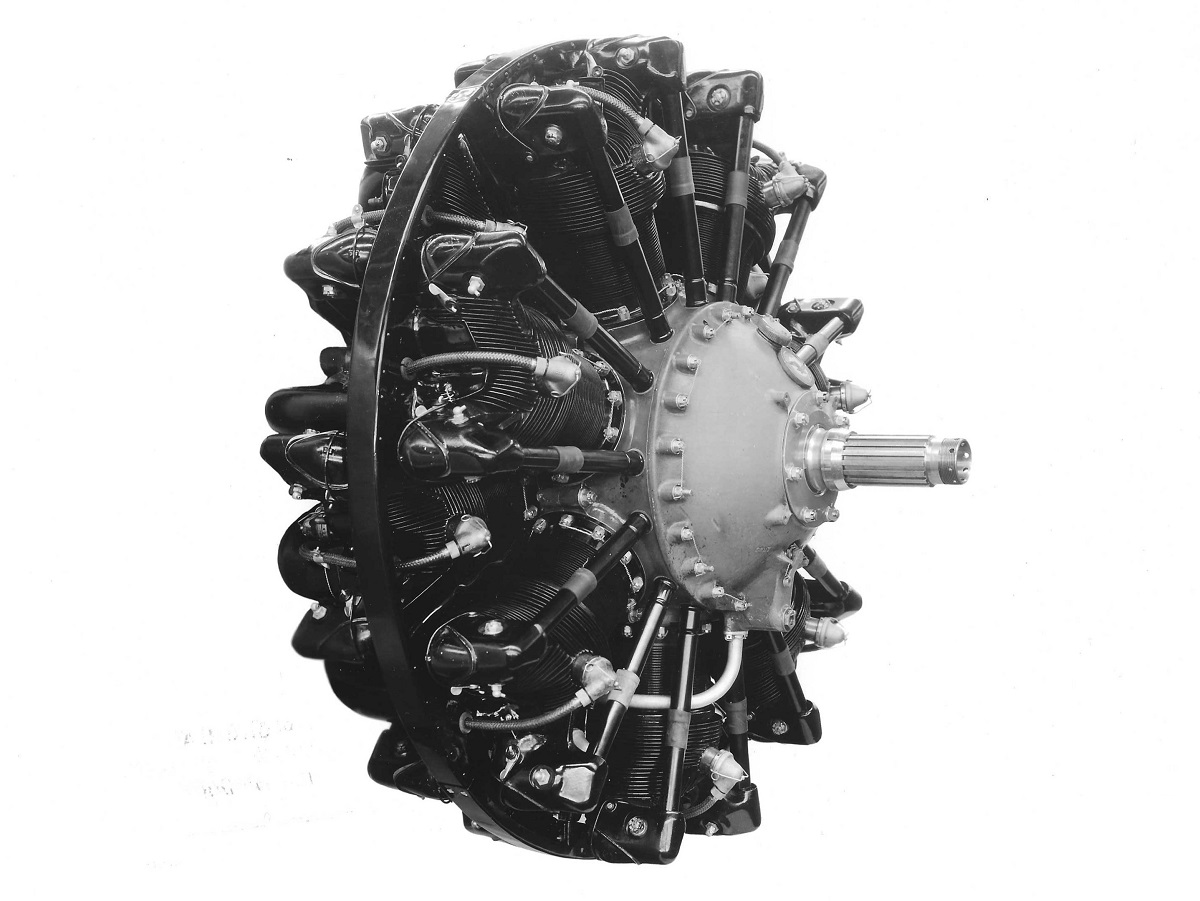
|
The Pratt & Whitney R-1535 Twin Wasp Junior |
|
| |
| |
 The original Pratt & Whitney R-1535 Twin Wasp Junior. (Photo: NEAM Ramsay Research Library) |
|
The fourteen-cylinder Pratt & Whitney R-1535 Twin Wasp Junior was introduced in 1932 as an alternative to nine-cylinder radials of the same horsepower. It was thought that a fourteen-cylinder radial with a smaller diameter would provide greater performance due to lower profile drag. The diameter of the Twin Wasp Junior was 43 7/8 inches (1114 mm), whereas the Pratt & Whitney Hornet diameter was 55 7/16 inches (1408 mm). However, the increased weight of the twin row, offset any gain from a lower profile. The weight was 1162 lbs. (528 kg) while the Hornet had a weight of 880 lb (400 kg). Although by 1934, the R-1535 produced almost the same power as the single-row R-1690 Hornet,1 the Grumman F3F would have a faster takeoff and faster climb from a carrier powered with a nine-cylinder Wright R-1820 Cyclone radial than those powered with the R-1535. At altitude and higher speeds, the increase in performance was found to be negligible.
|
 The Pratt & Whitney R-1535 AG Twin Wasp Junior. (Photo: NEAM Ramsay Research Library) |
| Specifications: | |
|---|---|
| Pratt & Whitney R-1535 Twin Wasp Junior | Date: | 1932 |
| Cylinders: | 14 |
| Configuration: | Double-row, Air-cooled radial |
| Horsepower: | 625 hp (466 kw) |
| RPM: | 2,400 |
| Bore and Stroke: | 5.2 in (132 mm) x 5.2 in (132 mm) |
| Displacement: | 1535 cu. in. (25.20 liters) |
| Diameter: | 43 7/8 inches (1114 mm) |
| Weight: | 1162 lbs. (528 kg) |
| Remarks: | Late models gave 825 hp (615 kw) |
Endnotes:
|
1. Herschel Smith. A History of Aircraft Piston Engines. Manhattan, Kansas: Sunflower University Press, 1993. 118-119. |
Return To Engine Index.
© Larry Dwyer. The Aviation History On-Line Museum. All rights reserved.
Created April 27, 2021. Updated August 14, 2024.